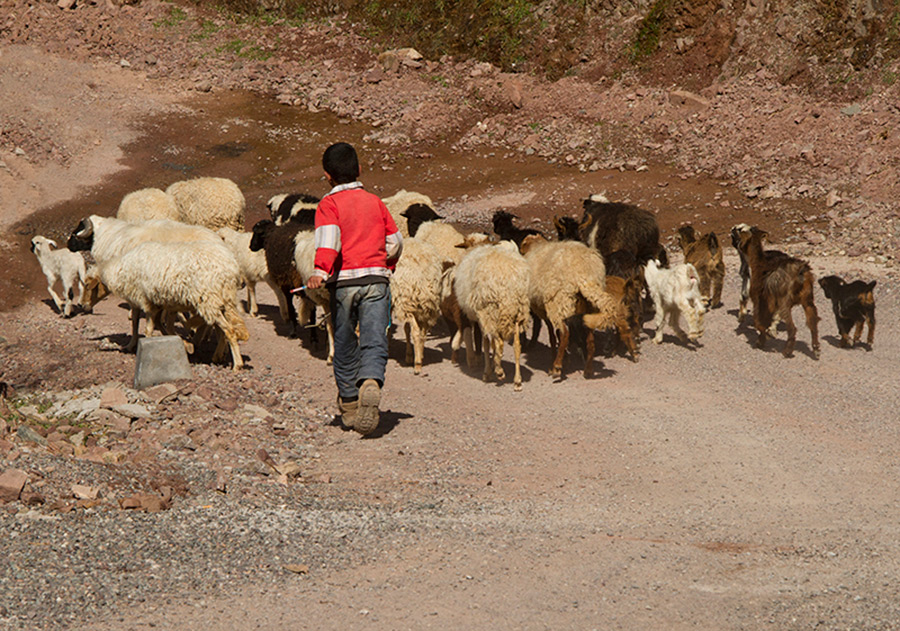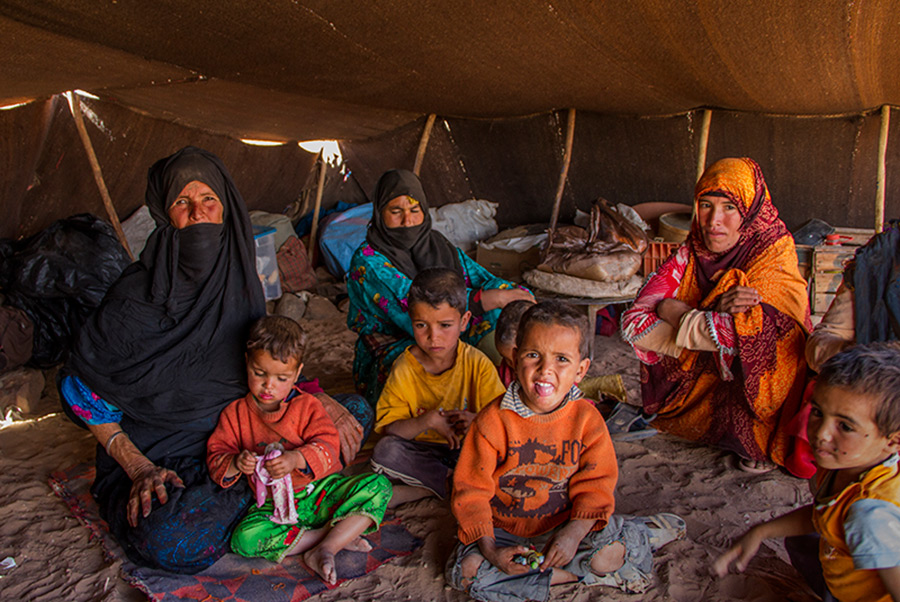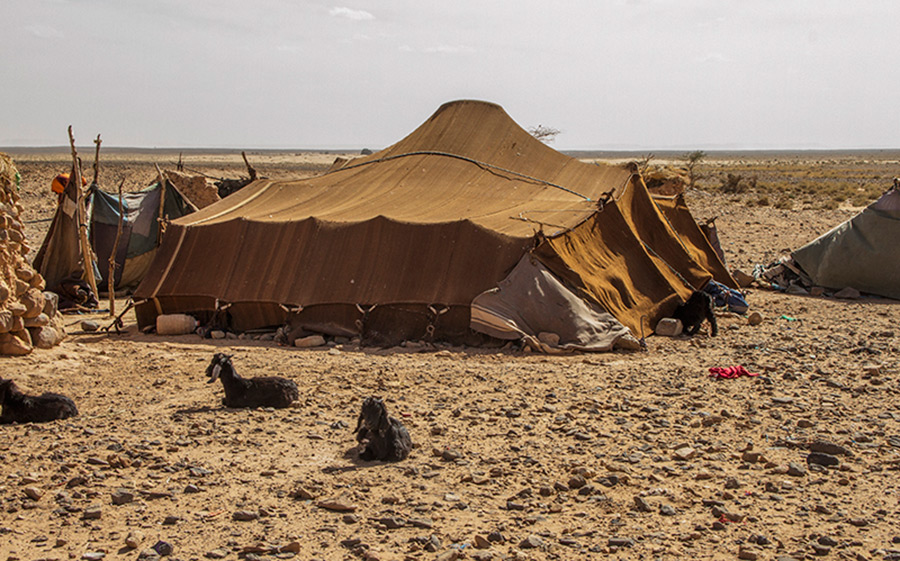


BERBER KIDS IN THE SAHARA
The Nomadic desert children usually don't attend a traditional school. Most never learn to read or write. Their classroom is the desert. At a very young age they acquire a deep understanding of the difficult Sahara environment and soon experience the daily challenge of raising animals, and following traditional family routes in search of food and water. Clean water is often unheard of. They share the same muddy, parasite infested pools of water along side their family herd animals. They learn to read the weather patterns to predict an upcoming sand storm. They are a hardy people who are the masters of survival in one of the harshest climates on earth.
The boys at first accompany the men in the daily guarding and rounding up of their herds. At ten years old they are found alone guarding animals under the blazing hot sun without complaint.

The girls learn to cook and manage the daily household jobs such as carrying water and firewood. Women and girl's clothing is colorful and traditionally consists of a large piece of cotton, silk, or wool cloth worn as an outer garment with a hood and wide sleeves called a djellaba in Morocco, but can be called by other names depending on which country the occupant lives. Women and girls over the age of ten normally wear a veil to cover their face, especially when in public.

Children living in villages are able to attend very small schools, sometimes consisting of only one classroom. They attend elementary school and receive basic education. After they finish elementary school, most families do not send their children to secondary school because it is far from the village where they live. Those who continue their schooling beyond elementary may attend schools where they learn trades. Because of the lack of schools and sometimes the harsh weather, 50% of those living in villages cannot read or write. Arabic is taught at schools but they speak Berber dialect in their daily life. They don't have many books and each student writes their lessons with chalk on a small handheld chalkboard.
Girls are less likely to attend schools than boys. Even those who attend elementary school very often don't continue onto secondary school. Some schools offer accommodation for students who live too far away for daily travel. Without the boarding houses it would be impossible for girls from remote villages to attend school. Many come from distant villages high in the Moroccan Atlas Mountains. Most families are very protective of their children and are reluctant to allow the girls to travel far from home.

Back to [Kid2Kid Index]
